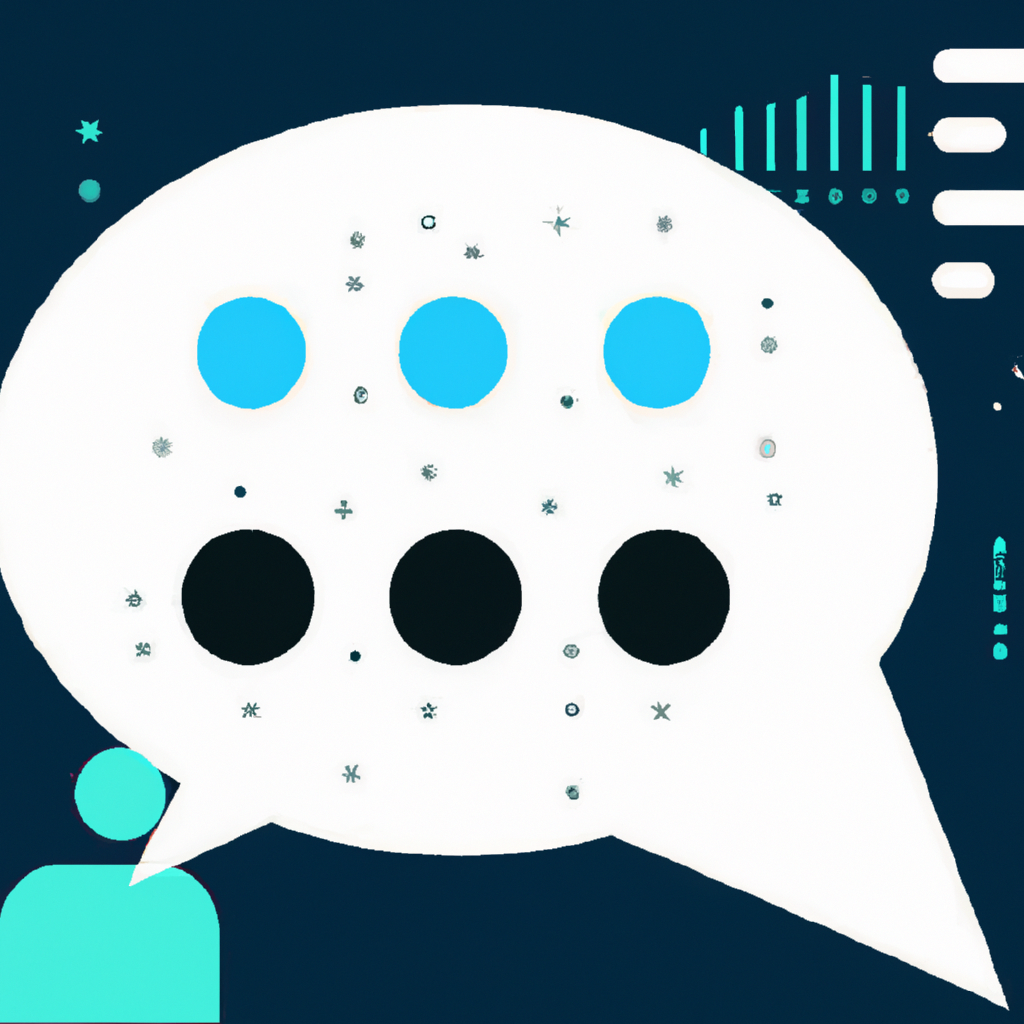Have you ever wondered if chatbots are capable of handling complex queries and transactions? In this article, we will explore the fascinating world of chatbot technology and delve into the question of whether these artificial intelligence-powered agents can effectively tackle complex tasks. Whether you’re a chatbot enthusiast or simply curious about the capabilities of this evolving technology, join us as we uncover the potential of chatbots in handling complex queries and transactions.

Understanding Chatbots
Chatbots are computer programs designed to simulate conversation with human users. They are often used as a form of customer service, providing quick and automated responses to users’ inquiries. These chatbots are programmed to understand natural language and respond accordingly, making them a convenient and efficient tool for businesses.
What are chatbots?
Chatbots are software applications that use artificial intelligence (AI) and natural language processing (NLP) to understand and respond to user queries. They can communicate with users through text or voice-based interfaces and are often used in messaging apps, websites, or phone systems.
Chatbots are designed to imitate conversation with humans, allowing users to interact with a computer program as if they were talking to a real person. They can answer frequently asked questions, provide product information, assist with transactions, and even offer personalized recommendations.
How do chatbots work?
Chatbots use a combination of AI and NLP technologies to understand and respond to user queries. When a user interacts with a chatbot, the chatbot analyzes the input and tries to decipher the user’s intent.
Chatbots employ various techniques to understand user inputs, such as rule-based systems, machine learning, or a combination of both. Rule-based systems use predefined rules and patterns to match user queries and provide predefined responses. Machine learning-based chatbots, on the other hand, learn from past interactions and use algorithms to generate responses based on patterns or similarities in the training data.
Once a chatbot understands the user’s intent, it generates a response and delivers it to the user. This response can be in the form of text, voice, or even multimedia content. The chatbot can then continue the conversation based on the user’s subsequent inputs.
Types of chatbots
There are several types of chatbots, each with its own capabilities and limitations. These include:
-
Rule-based chatbots: These chatbots follow predefined rules and patterns to respond to user queries. They are limited to providing predetermined responses and cannot handle complex queries or transactions.
-
Retrieval-based chatbots: Retrieval-based chatbots use predefined responses but can also generate responses based on patterns or similarities in the training data. They can handle more complex queries and provide more accurate responses.
-
Generative chatbots: Generative chatbots use machine learning algorithms to generate responses based on patterns in the training data. They can handle more complex queries and are capable of generating unique and contextually relevant responses.
-
AI-powered chatbots: AI-powered chatbots use a combination of machine learning, natural language processing, and other AI technologies to understand and respond to user queries. They can handle complex queries and transactions and provide a more human-like conversation experience.
Challenges in Handling Complex Queries and Transactions
While chatbots have come a long way in their ability to handle complex queries and transactions, there are still several challenges that need to be addressed.
Natural Language Understanding
One of the major challenges in building chatbots that can handle complex queries is natural language understanding. Chatbots need to be able to understand the nuances of human language, including slang, idioms, and contextual references. This requires advanced NLP techniques and sophisticated algorithms.
Context Management
Chatbots also need to be able to manage context effectively. Understanding the context of a conversation is crucial for providing accurate and relevant responses. For example, if a user asks a chatbot, “What is the weather like today?”, the chatbot needs to understand that “today” refers to the current day and provide an accurate response.
Data Integration
Chatbots often rely on data from multiple sources to provide accurate and relevant responses. Integrating data from various systems and APIs can be challenging, especially when there are inconsistencies or discrepancies in the data. Ensuring seamless data integration is crucial for chatbots to handle complex queries and transactions effectively.
Privacy and Security
Handling sensitive user information and ensuring privacy and security are major concerns when it comes to chatbot technology. Chatbots need to adhere to strict data protection regulations and protocols to safeguard user data. Implementing robust authentication and encryption mechanisms is crucial to ensure the privacy and security of user information.

Improving Natural Language Understanding
To tackle the challenge of natural language understanding, chatbot developers employ various techniques and technologies.
Machine Learning Techniques
Machine learning techniques, such as deep learning and neural networks, are widely used to enhance the natural language understanding capabilities of chatbots. These techniques enable chatbots to learn from large amounts of training data and improve their ability to understand and generate human-like responses.
Semantic Understanding
Semantic understanding refers to the ability of chatbots to interpret the meaning behind user queries. By analyzing the semantic structure of the input, chatbots can understand the intent of the user and provide more accurate responses. This involves techniques such as entity recognition, sentiment analysis, and relationship extraction.
User Profiling
User profiling involves building a profile of individual users based on their behavior, preferences, and past interactions. By analyzing user profiles, chatbots can tailor their responses to individual users, providing a more personalized and contextually relevant experience. User profiling also enables chatbots to remember past conversations and use that information to improve future interactions.
Effective Context Management
Managing context is crucial for chatbots to provide accurate and relevant responses. There are several aspects of context management that chatbots need to address.
Conversational Context
Conversational context refers to the ability of chatbots to remember and understand the ongoing conversation with the user. This involves keeping track of previous interactions, understanding references and callbacks, and maintaining a coherent conversation flow. Effective management of conversational context ensures that chatbots can provide contextually relevant responses and avoid repetitive or irrelevant information.
User Context
User context refers to the specific information about the user, such as location, preferences, and previous interactions. By understanding the user’s context, chatbots can provide personalized recommendations, tailor responses to individual preferences, and offer a more engaging user experience.
Session Management
Session management involves managing the overall session with the user, including the initiation, maintenance, and termination of the conversation. Effective session management ensures that chatbots can handle interruptions, resume conversations seamlessly, and provide consistent and coherent responses throughout the session.

Seamless Data Integration
Data integration is essential for chatbots to provide accurate and relevant responses. There are several challenges involved in integrating data from multiple sources.
API Integration
Many chatbots rely on external systems and APIs to gather information and provide responses. Integrating these APIs seamlessly into the chatbot’s backend is crucial for ensuring a smooth and uninterrupted user experience. This requires establishing secure connections, handling authentication, and processing data in real-time.
Data Transformation
Data from different sources may be in different formats or structures, making it difficult to integrate seamlessly. Data transformation involves converting data into a unified format or structure that can be easily processed and analyzed by the chatbot. This may involve techniques such as data normalization, aggregation, or enrichment.
Data Quality Assurance
Ensuring data quality is crucial for chatbots to provide accurate and reliable responses. Data may be inconsistent, incomplete, or contain errors, which can impact the chatbot’s ability to understand and respond to user queries. Implementing data quality assurance processes, such as data cleaning and validation, is essential to improve the reliability and accuracy of chatbot responses.
Ensuring Privacy and Security
Privacy and security are critical considerations when implementing chatbot technology. There are several measures that can be taken to ensure the privacy and security of user information.
Handling Sensitive Data
Chatbots often handle sensitive user information, such as personal details or financial data. It is essential to handle this data securely and in compliance with data protection regulations. Implementing secure data storage, transmission, and access control mechanisms is crucial to protect user information from unauthorized access or misuse.
Authentication and Authorization
Implementing robust authentication and authorization mechanisms is important to ensure that only authorized users can access the chatbot and its functionalities. This may involve techniques such as multi-factor authentication, single sign-on, or role-based access control.
Data Encryption
Data encryption is a crucial measure to protect user information from unauthorized access. Encryption ensures that sensitive data is encrypted before storage or transmission and can only be accessed with the correct decryption key. Implementing strong encryption algorithms and practices is essential to safeguard user information.

Enhancements in Chatbot Technology
Chatbot technology continues to evolve, thanks to advancements in AI, NLP, and related fields. Here are some key enhancements that are shaping the future of chatbots.
Artificial Intelligence and Deep Learning
Advancements in AI and deep learning have significantly improved chatbot capabilities. Chatbots can now learn from vast amounts of data and generate more accurate and contextually relevant responses. AI-powered chatbots are also becoming more adept at understanding user intent, providing personalized recommendations, and engaging in more natural conversations.
Natural Language Processing
Natural language processing (NLP) techniques are continuously being enhanced to improve chatbot understanding and response generation. NLP enables chatbots to understand the complexities of human language, including sentiment, intent, and contextual references. As NLP algorithms become more sophisticated, chatbots will be able to handle even more complex queries and produce more nuanced responses.
Knowledge Graphs
Knowledge graphs are a powerful tool for chatbots to enhance their understanding and response generation capabilities. Knowledge graphs are structured databases that store information in a way that enables semantic connections and relationships to be easily identified. By leveraging knowledge graphs, chatbots can access a wealth of information and provide accurate and relevant responses based on a deep understanding of the underlying concepts and relationships.
Real-World Use Cases
Chatbot technology has found applications across various industries. Here are some real-world use cases where chatbots have proven to be effective.
Banking and Financial Services
Chatbots are widely used in the banking and financial services industry to handle customer inquiries, provide account information, assist with transactions, and offer personalized financial advice. Chatbots can quickly and accurately respond to commonly asked questions, reducing the load on customer service representatives and providing a convenient and efficient customer experience.
E-commerce and Customer Support
Chatbots have become an integral part of e-commerce platforms, providing virtual assistants that can help customers find products, answer questions about shipping and returns, and facilitate transactions. Chatbots can also offer personalized product recommendations based on user preferences and purchase history, enhancing the overall shopping experience.
In the customer support industry, chatbots are used to automate responses to common queries, providing quick and efficient resolutions to customer issues. Chatbots can handle multiple customer inquiries simultaneously, ensuring faster response times and improved customer satisfaction.
Healthcare and Medical Assistance
Chatbots are being used in the healthcare industry to provide medical information, answer common health-related questions, and offer personalized health recommendations. Chatbots can assist patients in scheduling appointments, tracking their medication, and monitoring their health conditions. They can also offer emotional support and mental health assistance, providing a convenient and accessible resource for individuals seeking medical advice or guidance.

Limitations of Chatbots
While chatbots have made significant progress, there are still limitations to their capabilities.
Complex and Unforeseen Situations
Chatbots may struggle to handle complex or unforeseen situations that go beyond their programmed capabilities. When faced with queries or scenarios outside their training data, chatbots may provide generic or inaccurate responses. Human intervention may be required to address complex or unique situations that chatbots are not equipped to handle.
Emotional Understanding
Chatbots lack emotional understanding and empathy, which can be a significant limitation in certain scenarios. When users express sadness, frustration, or other emotions, chatbots may not be able to provide appropriate emotional support or understanding. Emotional understanding requires nuanced interpretation of language and context, which chatbots may struggle to achieve.
Human Interaction
For some users, interacting with a chatbot may not provide the same level of satisfaction as interacting with a human. While chatbots can provide quick and accurate responses, they may lack the empathy and personal touch that human interaction offers. In situations that require emotional support or complex decision-making, users may prefer interacting with a human representative.
Future Outlook
Despite the limitations, chatbots have a promising future with continuous advancements in AI and related technologies. Here are some key areas that will shape the future of chatbots.
Advancements in AI
Advancements in AI will continue to improve chatbot capabilities. AI-powered chatbots will become even more proficient at understanding user intent, providing personalized recommendations, and engaging in natural and contextually relevant conversations. As AI algorithms become more sophisticated, chatbots will be able to handle increasingly complex queries and transactions.
Hybrid Models
Hybrid models that combine chatbots with human intervention are expected to become more prevalent. These models leverage the efficiency and accuracy of chatbots while offering the emotional understanding and complex decision-making capabilities of humans. Hybrid models allow businesses to strike a balance between automation and human touch, providing a seamless and satisfying user experience.
Improved User Experience
With advancements in AI, NLP, and overall chatbot technology, the user experience is expected to improve significantly. Chatbots will be able to understand and respond to user queries more accurately, provide personalized recommendations, and offer a more engaging and natural conversation experience. Improved user experience will drive wider adoption of chatbot technology across various industries.
In conclusion, chatbots have come a long way in their ability to handle complex queries and transactions. Through advancements in AI, NLP, and related technologies, chatbots have become increasingly proficient in understanding and responding to user queries. While there are still challenges to overcome, such as natural language understanding and data integration, chatbots continue to evolve and offer innovative solutions in various industries. With the promise of improved user experience, chatbots are poised to play a significant role in shaping the future of customer service and interaction.
